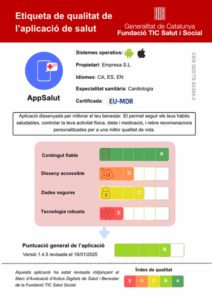An international team of scientists, including the Institute of Chemical Technology (ITQ), has developed a new electrified reactor to obtain hydrogen in a more sustainable and energy-efficient way. The advancement is published in the journal Science. The authors have successfully combined 36 individual ceramic membranes in a scalable and modular generator that produces hydrogen from electricity and various fuels with almost zero energy loss. This is the first time that this technology has been shown to allow the industrial production of hydrogen.
Hydrogen is the most abundant chemical element on the planet, but it is not readily available. It must be obtained from other elements that contain it. The production of this fuel for energy purposes is classified by colors according to the ‘cleanliness’ of its production. The cleanest is green hydrogen, which is produced using renewable sources of energy, but the most common is blue hydrogen, which is extracted from natural gas. The results of the new work are promising for the competitiveness of both types in terrestrial and maritime transportation, as well as other industrial markets and uses.
The protonic ceramic electrochemical reactors used in this study use electric energy to extract hydrogen from other molecules with exceptional energy efficiency. The fuel can be ammonia, natural gas (mainly methane), biogas, or other hydrogen-containing molecules. The project has allowed scaling up an electrified reactor to produce approximately half a kilo of pressurized hydrogen per day through electrocompression, with high purity and maximum energy efficiency, above 90%.
The energy conversion and storage group at ITQ has demonstrated that it is possible to work with this type of technology at 150 bar pressure, one of the most notable milestones of the study. In addition, with this system, the carbon dioxide (CO2) produced in the process is not emitted into the atmosphere, but instead it is converted into a pressurized stream for liquefaction and transport for further use or storage, enabling decarbonization.
The results show for the first time that protonic ceramic technology can be used to create scalable hydrogen devices that pave the way for mass industrial manufacturing. While other clean energies like solar or wind are intermittent, hydrogen has the advantage of being able to store and distribute energy.
“This system will allow us to store energy in the form of high-density energy molecules containing hydrogen, addressing the issue of the intermittency of renewable sources,” says co-author Sonia Remiro Buenamañana, a researcher at ITQ. In addition to this institute, the research team includes scientific and engineering personnel from the University of Oslo, the SINTEF center (Norway), as well as from the CoorsTek Membrane Sciences research department of the CoorsTek company.
“Energy efficiency is key to the future of hydrogen,” says another author, Irene Yuste, a chemical engineer at CoorsTek Membrane Sciences and a doctoral student at the University of Oslo.
“When energy is transformed from one form to another, there is energy loss,” explains Jose Manuel Serra, a research professor at CSIC at ITQ and a lead co-author of the study. “With our protonic ceramic membranes, we can combine different steps of hydrogen production into a single stage – a single step – where the heat for catalytic hydrogen production is provided by the electrochemical separation of gases to create a thermally balanced process. The result is hydrogen produced with almost zero energy loss.”
Protonic ceramic membranes are electrochemical energy converters, similar to batteries, fuel cells, and electrolyzers. One of the key advances is a new component developed by the CoorsTek Membrane Sciences department using ceramic and metallic materials, combining the high-temperature robustness of ceramics with the electronic conductivity of a metal.
These membranes operate at high temperatures, between 400 and 800 degrees Celsius, breaking down hydrogen into its subatomic particles (protons and electrons), and transporting the protons through a solid ceramic electrolyte. “Our group has conducted an extensive study of the reaction rates and mechanisms involved to improve the operational conditions of these systems,” comments Maria I. Valls Esteve, another researcher at ITQ.
This work has been supported by technology experts and financial resources from major energy companies: Shell, ExxonMobil, TotalEnergies, Equinor, ENGIE, and Saudi Aramco. The Norwegian state company for carbon capture, storage, and transport, Gassnova, and the Research Council of Norway also contributed funds.
To achieve these results, an open innovation strategy has been followed to generate free knowledge and drive the maturity of this disruptive technology. The next step in the development program is to install a prototype of an independent hydrogen generator on the campus of the Saudi Aramco company headquarters in Dhahran, Saudi Arabia.
Referrer: MiMub in Spanish











